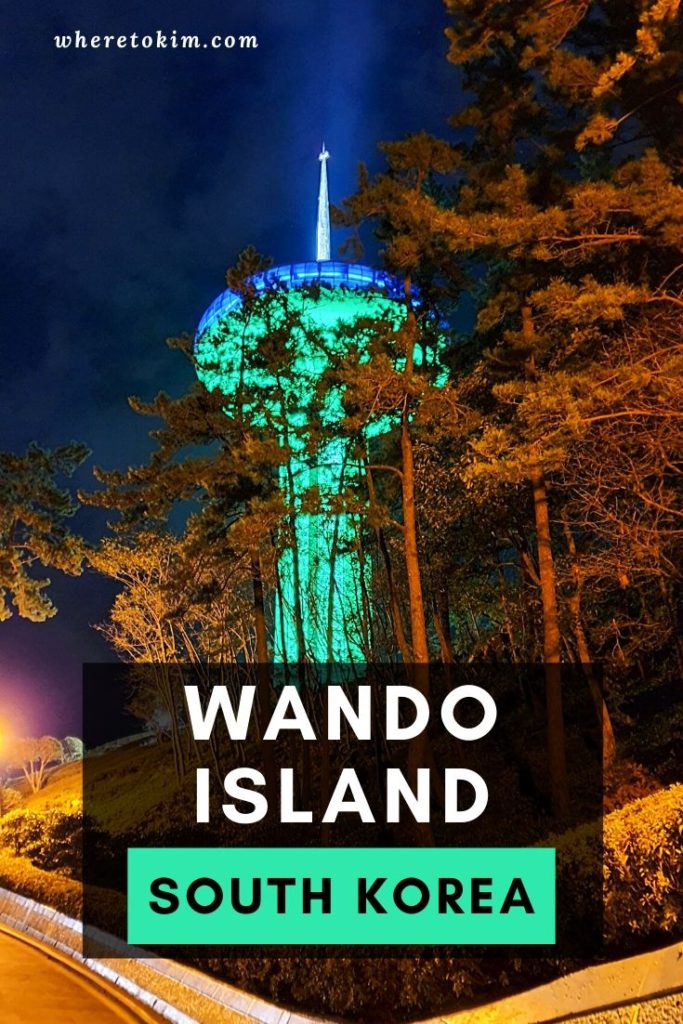Wando is an island in the southern part of South Korea known for its production of seaweed products and its high-quality abalone.
Wando Island is connected to the mainland by a bridge. It is most famous for Cheonghaejin; the headquarters of Jang Bogo who dominated the sea routes in the Yellow Sea in the ninth century.
With Wando City as your base, you can easily explore many other islands in the county. Best known among those are Sinjido which you can reach by car and Soan Island, Cheongsan Island (“Slow city”) and Bogil Island which you can reach by ferry. You can also board the ferry to Jeju Island from here.
Wando is known for its production of seaweed products and its high-quality abalone. The whole island is surrounded by seaweed farms and the same goes for other islands in the area. As some seaweed types can only be farmed in very clean water, this tells you a lot about the health benefits of spending time on Wando Island.
I visited Wando during my second round trip in South Korea, focusing on the south and west of the country.
Where to stay on Wando Island
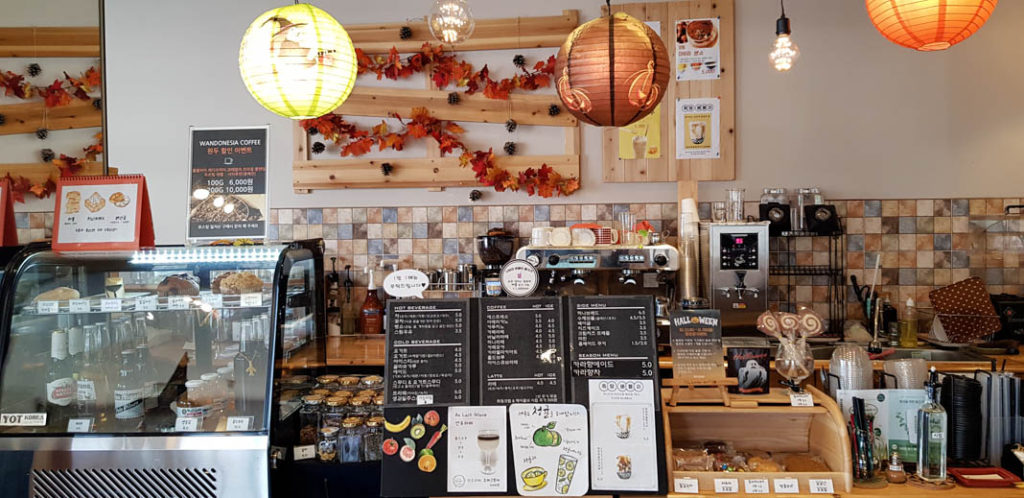
I stayed at Wandonesia, a hotel near the harbor, offering a nice view of said harbor from the rooftop terrace (no chairs though). It’s a place I would recommend to whoever visits Wando: spacious rooms, nice hosts, good location. The cozy cafe on the first floor serves bagels with coffee or tea for breakfast (included). The owners can also provide you with information about visiting the islands and sites in the area.
Small note: there is no elevator. So either be prepared to carry your luggage to the third, fourth or fifth floor, or pack an overnight bag and leave your luggage in the car.
Things to do on Wando Island
Cheonghaejin Historical Site (장도 청해진 유적지)
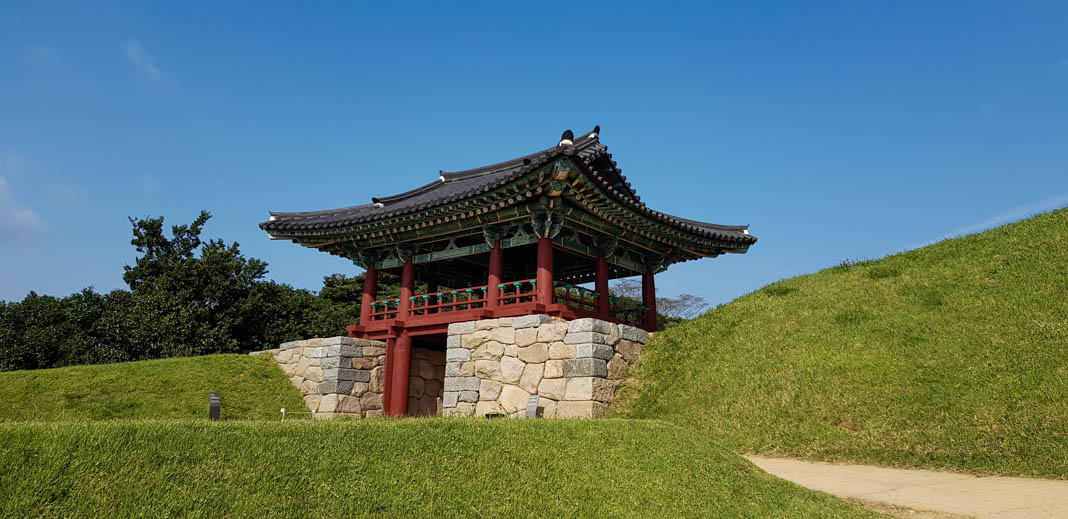
On the eastern side of Wando you can visit Cheonghaejin on Jangdo Island. The island is connected to the mainland by a short pedestrian bridge. When the tide is low you can see many locals looking for shellfish on the mudflats surrounding the island. And technically, you won’t need the bridge to cross. Low tide will also reveal the remnants of the wooden fence built around Jangdo to protect the island.
On the island, you can see many historical sites related to general Jang Bogo, a famous naval general born in Wando during the Silla Dynasty. When you walk around the island you will see Cheonghaejin castle, Wadangpyeon Dasu, Togipyeon and shrines.
It basically feels like you’re on your own paradise island and it isn’t hard to imagine the Koreans of the past used this island as a naval base.
You can park your car just south of the pedestrian bridge. There is a small parking lot with room for five cars. When approaching Cheonghaejin I recommend avoiding the small streets between the houses and to take the wider road leading to the coast instead. You can drive through the neighborhood, but it gets kind of narrow.
Location: 9P5P+C3 Wando-eup, Wando-gun, Jeollanam-do, South Korea
Statue of Jang Bogo (장보고동상)
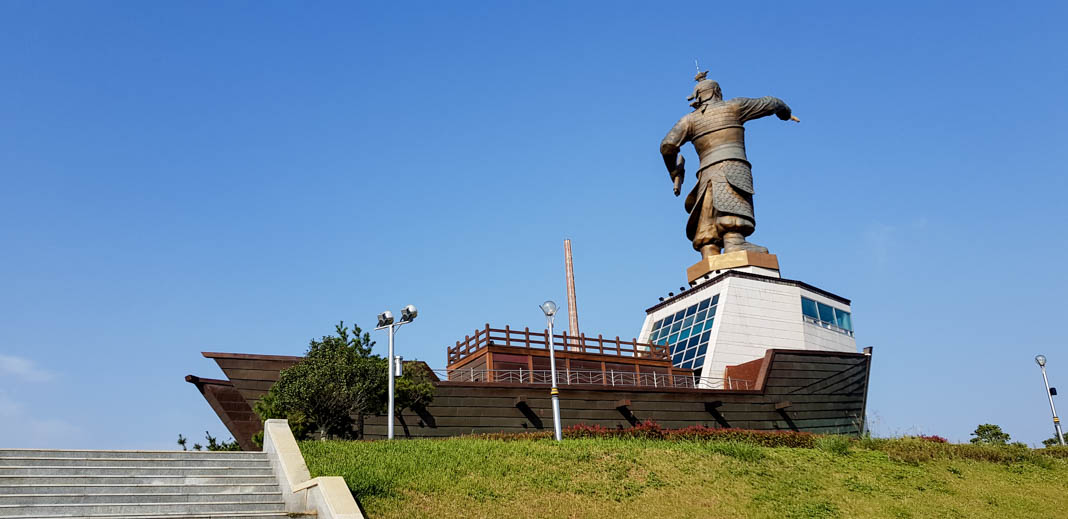
Back on Wando, not far south of Cheonghaejin, you can see the Statue of Jang Bogo on top of a building resembling a ship surrounded by a small park overlooking the sea. Inside you can find a small museum where you can learn more about Jang Bogo and his importance for maritime trade between Silla, Japan and the Tang Dynasty. The plaques on the wall have English translations.
Next to the building, you can also find other objects like miniature ships related to Jang Bogo and Wando’s naval history. For kids there is a small playground.
Location: Jukcheong-ri, Wando-eup, Wando-gun, Jeollanam-do, South Korea
Wando town and harbor (완도읍)
Heading further south you reach Wando town nestled around the harbor. Here you can find many restaurants serving seafood dishes, comfortable cafes and some stores. From the passenger terminal you can take the ferry to Jeju Island, Taemo Island and Cheongsan Island; the ‘slow city’ known for its quietness and spring flowers. Though I think it is getting more popular every year and it is probably not very quiet at peak times.
The town itself is not that big, but it has everything you need for a few days.
Where to eat Wando abalone and seaweed
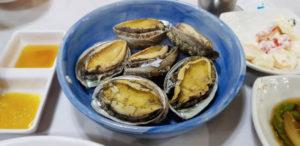
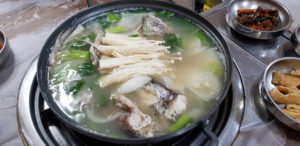
Another place I liked is 그때그자리. They only have a few tables but the food was very good. This is also one of the places that serve both fish and meat (such places are hard to find!). We had fish soup (catch of the day) and stir-fried pork.
Both restaurants have tables with chairs, while many other restaurants in the street only offer ground seating.
Buying seaweed souvenirs
Right next to restaurant 빙그레식당 you can find a small place selling seaweed souvenirs.
Sea Algae Center (해조류센터 해조류전시관)
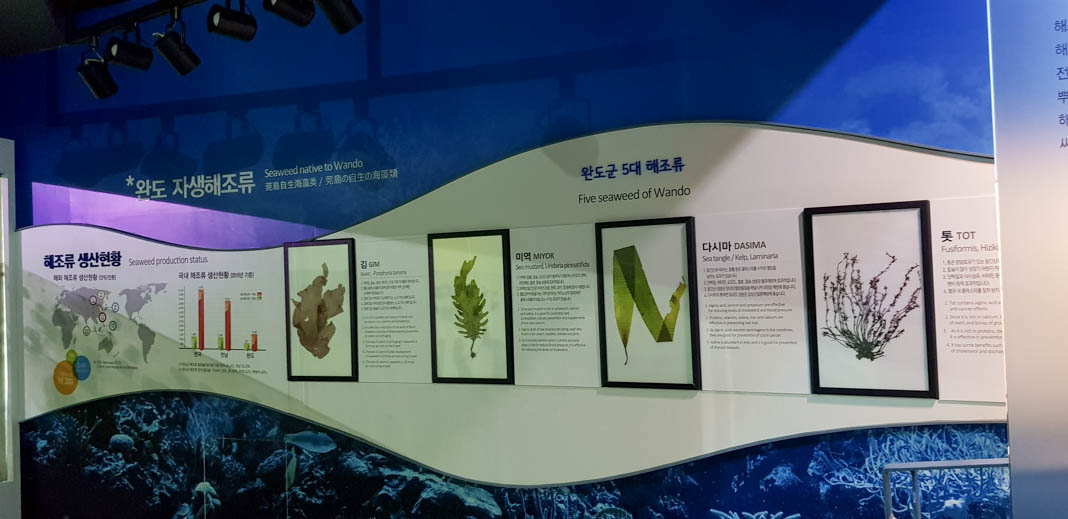
I also highly recommend a visit to Wando’s Sea Algae Center in the harbor of Wando: the visual representation inside the museum is beautiful and there are short English movies about the different types of seaweed and the abalone cultivated on Wando and the surrounding islands. If you’re planning to visit Bogil Island, you will see many seaweed farms ‘in action’. And if you look closely you can spot abalone processing shops in Wando town.
Here I learned more about the farming of Abalone, Laver, Kelp, Tot, Miyeok and Maesaengi. I brought some Miyeok (미역 – Wakame) and Tot (톳 – Hijiki) home with me to enjoy Wando’s seaweed a bit longer.
Location: 84 Haebyeongongwon-ro, Wando-eup, Wando-gun, Jeollanam-do, South Korea
Wando Tower (완도타워)
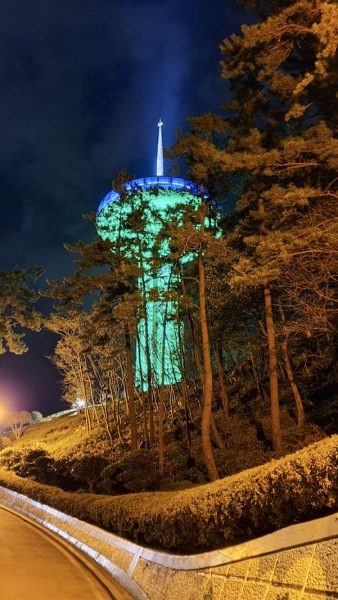
Wando Tower makes for a great visit in the evening when it gets dark. The illuminated tower itself is beautiful and from the park surrounding it, you have a great view of the illuminated city and harbor. You can go up the tower for an even higher viewpoint.
Location: 330 Jangbogo-daero, Wando-eup, Wando-gun, Jeollanam-do, South Korea
Sinji myeongsasimni Beach (신지명사십리 해수욕장)
On Sinjido (신지도), an island connected to Wando by bridge, you can visit Myeongsasimni Beach. This sandy beach is known for its beautiful scenery, the abundance of minerals in the seawater and clean air. So if you like beaches then this is a good one that will also benefit your health.
Location: 85-105 Myeongsasimni-gil, Sinji-myeon, Wando-gun, Jeollanam-do, South Korea
Dadohaehaesang National Park (다도해해상국립공원)
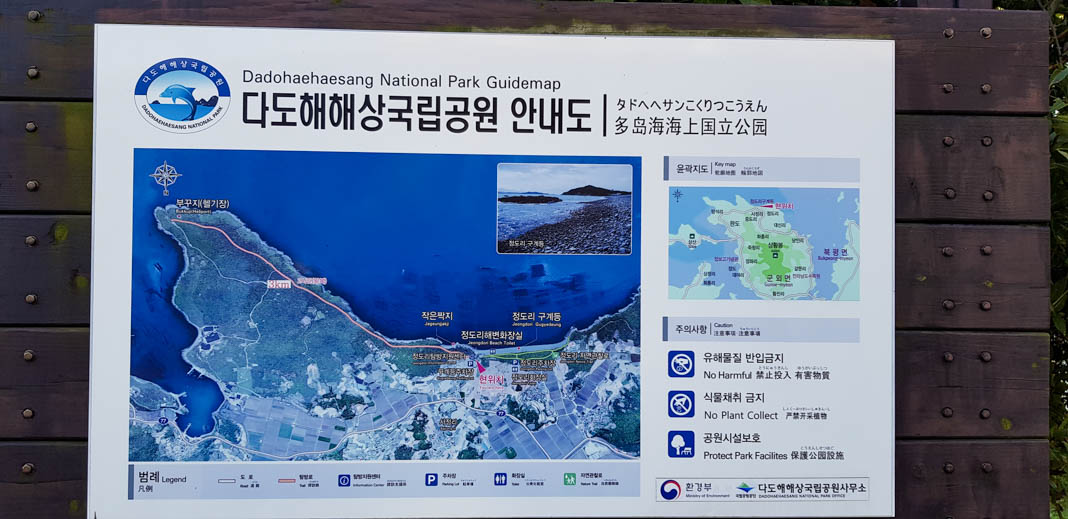
On the southern coastline of Wando Island lies Dadohaehaesang National Park. This protected area is ideal for a stroll along the coast. There is a big parking lot near the starting point and if you visit off-season you will wonder if that many parking spots are ever used. If you head to the western side of the park you will find yourself on a beach (Jeongdori Beach) with round stones from where you can see other islands in the area. This scenic area is called Gugyedeung (Pebble Beach) because the pebbles have been piled up in nine tiers on the coast over many years. This beach is famous because of these beautiful rounded pebbles on which you can walk barefoot (free acupuncture!). It is also one of the cleanest seaside areas in the country.
Just as interesting is the 3km path between the trees and bushes that takes you to the far eastern side of the park. The path leads you through a windbreak evergreen forest. There are about twenty kinds of trees, including black pines, maple and zelkova. The vegetation in this area is very diverse and beautiful to see.
Location: 1489-16 Jungdo-ri, Wando-eup, Wando-gun, Jeollanam-do, South Korea
Hwaheungpo port (화흥포항)
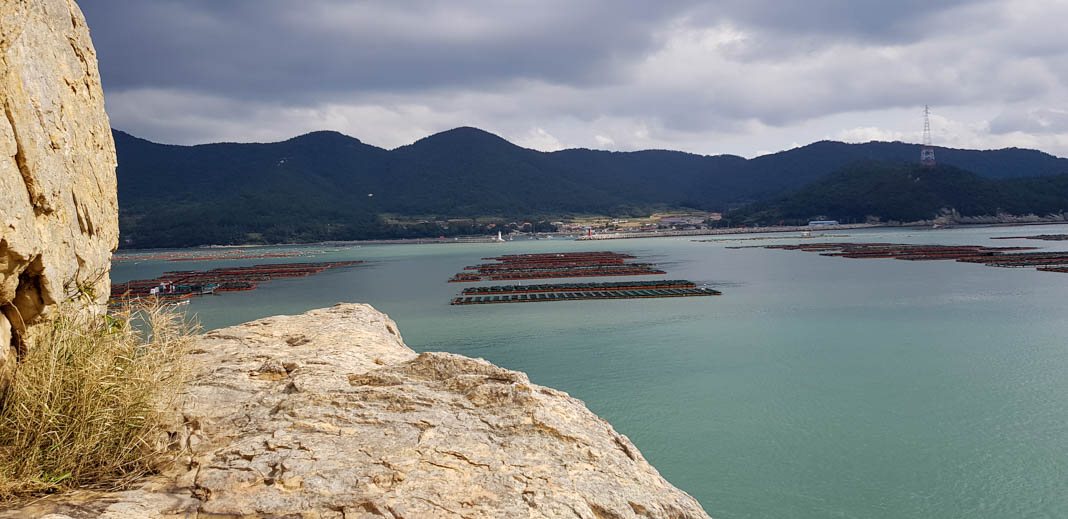
One of the best things about Wando is that it provides easy access to other islands in the area. The most well-known island, Cheongsan Island, can be reached from the passenger terminal in Wando Town. Hwaheungpo port on the south western part of Wando can take you to Bogil Island (Bogildo), Nohwa Island and Soan Island.
I chose to visit Bogil Island because it sounded like a more offbeat destination. And I chose well: it was a beautiful island completely devoid of tourists.
Location: 8M3H+WJ Wando-eup, Wando-gun, Jeollanam-do, South Korea
Haesin Cheonghaepogu Filming Set (청해포구 촬영장)
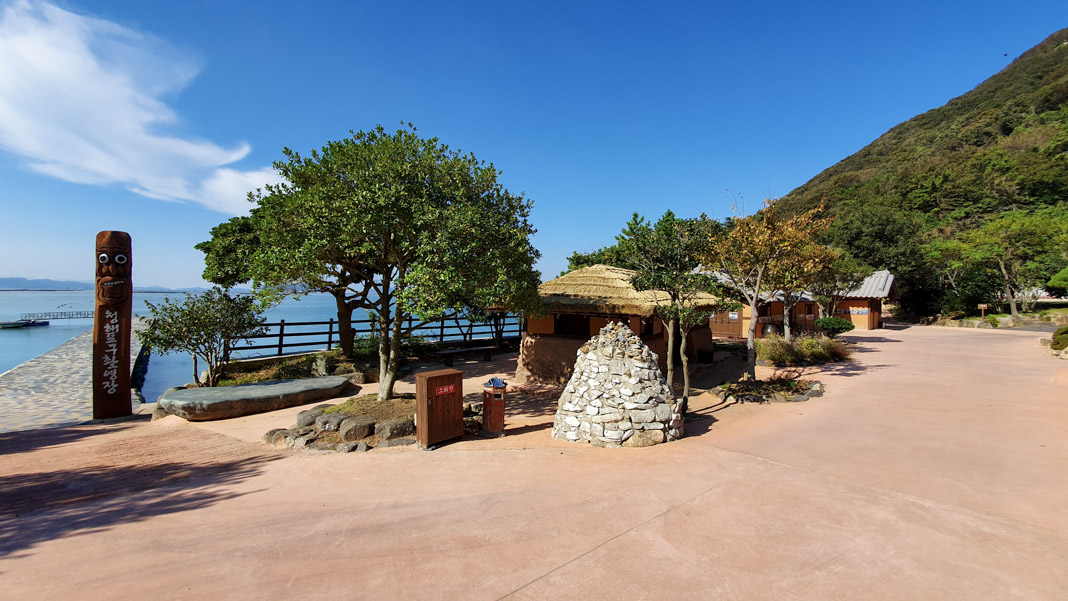
On the west coast of Wando you can visit Haesin Cheonghaepogu Filming Set to watch the reconstructed (pirate) village where many films and series were shot. Think of Haesin, Chuno, Rookie Historian Gu Hae Ryung and many more. If you have seen these tv shows or are planning to watch them, then it will be fun to see the filming set in real life.
I can imagine this filming set not being a lot of fun during peak season as it would feel like a theme park without attractions. But when you and a bus of Korean retirees are the only visitors, then it becomes a fantastic destination. With the sun shining the bay feels like a pirate bay or a Greek island, except you can see the seaweed farms everywhere you look.
The buildings in the village take you back to Korea as they resemble the Confucian schools and other historical buildings spread around the country. Except this time they’re built against the hill.
Location: 산47-53 Daesin-ri, Wando-eup, Wando-gun, Jeollanam-do, South Korea
Wando Arboretum (완도수목원)
At Wando’s center lies Wando Arboretum. This arboretum boasts the largest and best natural habitat of broad-leaved evergreens in the world. How did I miss that? The area is home to many animals and has very diverse vegetation (both natural and transplanted). At the Wando Arboretum you can also explore tropical and subtropical greenhouses, an observatory and an aquatic botanical garden. A great place for a walk – and included on my wishlist for my next visit to Wando Island.
Location: 156 초평1길, Gunoe-myeon, Wando-gun, Jeollanam-do, South Korea
Day trips from Wando Island
Dosolam hermitage (도솔암)
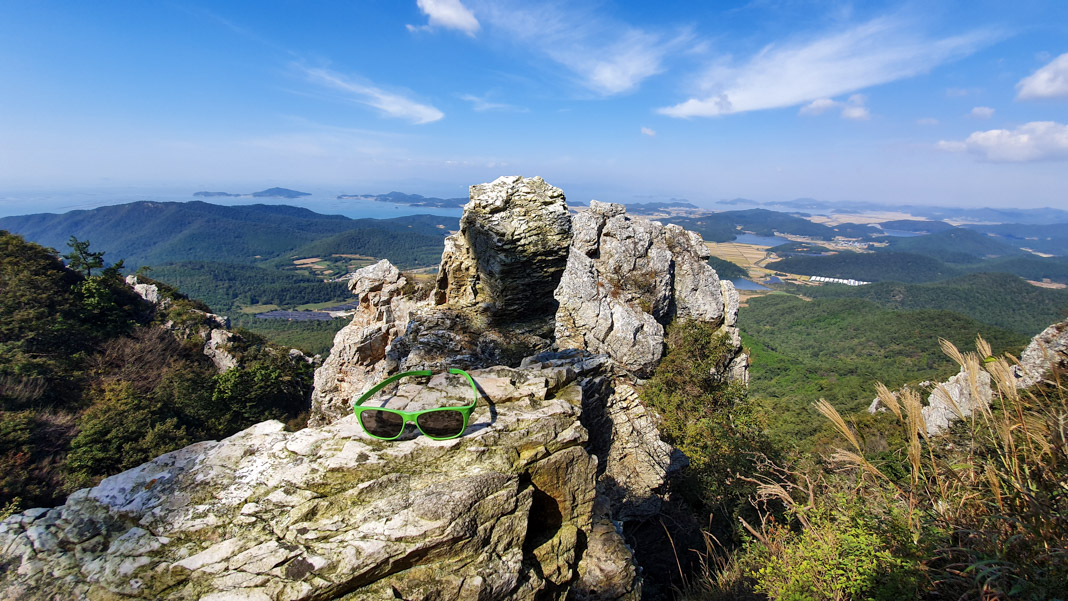
In a mountain range west of Wando (which you can see while driving along the west coast of Wando) you can visit Dosolam Hermitage. Dosolam Hermitage is reachable with a walk of less than half an hour from the parking lot. Perhaps more interesting than the hermitage (which was boarded during my visit) is the beautiful view of the rocky mountains and the surrounding area that you have from the path. If you have the time you can also do a longer hike in this area.
Location: 9H37+V6 Haenam-gun, 전라남도 South Korea
Duryunsan Cable Car (두륜산 케이블카)
Near Haenam, north of Dosolam Hermitage, lies Duryunsan Provincial Park. You can take the cable car or hike for 2-3 hours to reach the top for a beautiful view of the surrounding area, including Duryunsan’s eight peaks and if you are lucky, Hallasan on Jeju Island. In the provincial park Duryunsan is part of you can also find many temples and traditional houses surrounded by mountains and trees if you follow the road south. Duryunsan Cable Car was one of my favorite cable cars in South Korea.
Location: 88-45 Daeheungsa-gil, Samsan-myeon, Haenam-gun, Jeollanam-do, South Korea
Pin it for later
